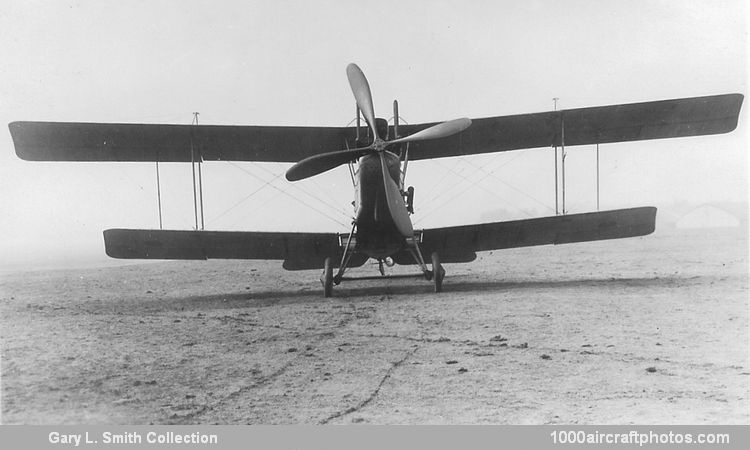12/15/2017. Remarks by Johan Visschedijk: "As early as autumn 1915 it was realized that the B.E.2c was obsolete, and a replacement Corps aeroplane was requested by the R.F.C. Headquarters; it was particularly desired that the new machine should be able to defend itself. This specification was implemented by the designers (amongst them being W. H. Barling, later associated with the Tarrant Tabor and Barling bomber triplanes) and the prototype R.E.8 went to France for operational trials in June 1916.
Its engine was the 150 hp Royal Aircraft Factory 4a, tilted slightly back on its bearers, with a large air scoop and twin exhaust stacks. The single-bay wings were rigged with both stagger and dihedral, the top plane extensions being braced from kingposts above. Light struts connected the ailerons. Wood-framed and fabric covered, the fuselage sloped upwards towards the tail, combining with the raked engine to give a broken-backed appearance to the R.E.8. A very small fin was provided, and the tail skid was built into the base of the rudder. A single Lewis gun, later increased to two, was mounted in the rear cockpit; on production R.E.8s the pilot had a synchronized Vickers gun, fixed on the port side of the fuselage. 260 lb (118 kg) of bombs could be carried.
Large orders were placed for the R.E.8, but production was held up owing to shortages of raw material. The 4a engine was at first unreliable, and it was found that the new machine was very prone to spin. In addition, the top wing extensions were said to be unsafe, so that the R.E.8 had a bad reputation long before it reached the Front. In order to cure the tendency to spin, the fin was gradually increased in area and a large lower fin was added; in its final form the type was at least safe to fly. The first R.E.8 squadron, No. 52, arrived in France in November 1916. A series of accidents so badly affected the unit's morale that re-equipment with B.E.2es took place, and several months elapsed before R.E.8s were re-issued. Other units found the new type more acceptable, and by September 1917 sixteen squadrons flew the R.E.8 on the Western Front.
Awkward and outdated, tricky to land and slow in maneuver, the R.E.8 carried out the bulk of British artillery-spotting, contact-patrol and photographic work in the last eighteen months of war. Usually an easy mark for enemy fighters, it occasionally triumphed; on August 21, 1917, Oblt. Dostler (twenty-six victories) was killed by an R.E.8 gunner, and on June 9, 1918, Lts. Armstrong and Mart of No. 3 Squadron, Australian Flying Corps, shepherded an undamaged Halberstadt CL.II back to their aerodrome at Flesselles. One machine, A4397, made 147 trips over the lines and logged 440 hours 35 minutes service flying time! Early dislike of the R.E.8 changed to tolerance and finally to affection; it became the 'Harry Tate', taking the name of the swivel-mustached music-hall comedian. Twenty-two examples, fitted with 150 hp Hispano-Suiza engines flew with the Belgian Aviation Militaire, and the type also served in Italy and in Palestine. Seventeen British Squadrons flew the R.E.8 of which 4077 were constructed."
